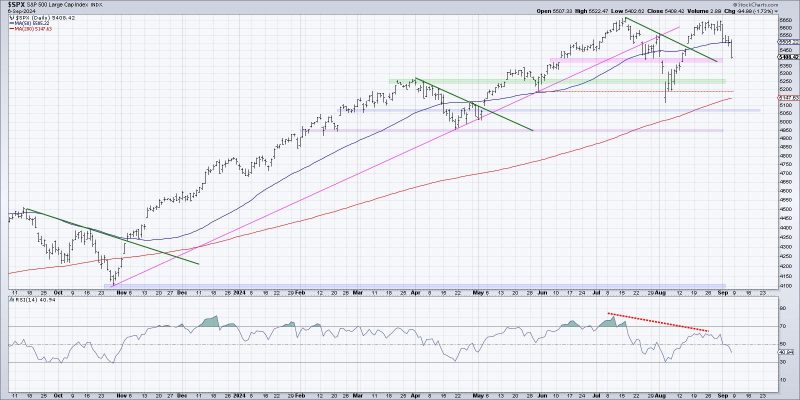The article:
Market Tops in Three Charts: A Comprehensive Analysis
Chart one: The Volatility Index (VIX)
The Volatility Index, also known as the VIX, is a popular measure of market sentiment and expected volatility in the financial markets. Historically, spikes in the VIX have often coincided with market tops and subsequent downturns. In the chart provided by godzillanewz.com, we can observe how the VIX tends to surge during periods of market stress and uncertainty.
During times of heightened volatility, investors become more risk-averse and tend to sell off assets, leading to market declines. Therefore, monitoring the VIX can provide valuable insights into market sentiment and potential turning points. It serves as an important tool for investors to assess the level of fear or complacency in the market.
Chart two: The Shiller PE Ratio
The Shiller PE Ratio, also known as the cyclically adjusted price-to-earnings ratio, is another valuable indicator for identifying market tops. This ratio takes into account earnings over a 10-year period, providing a more stable measure of valuation compared to traditional P/E ratios. In the chart provided, we can see how the Shiller PE Ratio fluctuates over time, highlighting periods of overvaluation and undervaluation in the market.
High Shiller PE Ratios signal that stocks may be overpriced relative to their long-term average earnings, indicating a potential market top. Historically, elevated Shiller PE Ratios have preceded market downturns, making it a useful tool for investors to gauge market valuations and make informed decisions.
Chart three: Investor Sentiment Indicators
Investor sentiment indicators, such as the AAII Sentiment Survey and the NAAIM Exposure Index, provide valuable insights into market psychology and sentiment. These indicators track the sentiment of individual investors and investment managers, reflecting their optimism or pessimism towards the market. In the chart provided by godzillanewz.com, we can see how shifts in investor sentiment can signal potential market reversals.
Extreme bullish sentiment often accompanies market tops, as investors become overly optimistic and complacent about future returns. Conversely, extreme bearish sentiment may signal market bottoms, as investors panic and sell off assets. By monitoring investor sentiment indicators, investors can gauge market sentiment and identify potential turning points in the market.
In conclusion, analyzing these three charts – the VIX, the Shiller PE Ratio, and investor sentiment indicators – can provide valuable insights into market tops and potential downturns. By incorporating these indicators into their investment strategy, investors can better navigate market cycles and make informed decisions to protect their portfolios. Understanding market dynamics and key indicators is crucial for long-term investment success.
